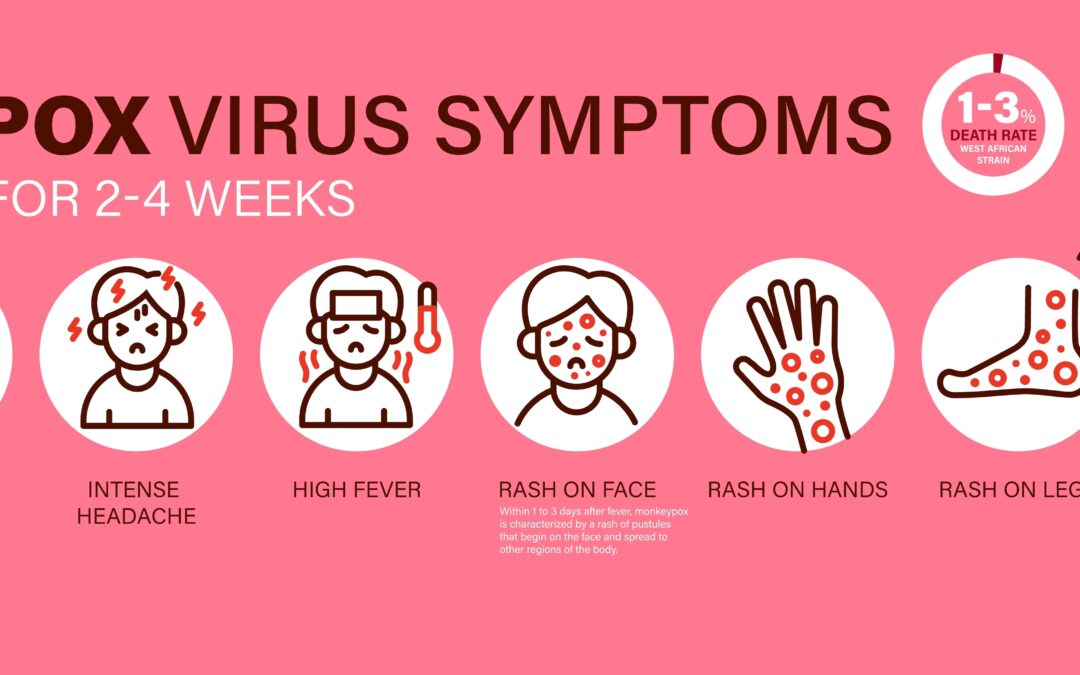The monkeypox virus continues to spread across the United States, but it could soon be known as something else. The World Health Organization (WHO) says it’s holding an open forum to rename monkeypox, after some critics raised concerns that the name could be derogatory. WHO said they aim to “avoid causing offense to any cultural, social, national, regional, professional, or ethnic groups, and minimize any negative impact on trade, travel, tourism or animal welfare.”
As we await their decision, we want to make sure you and your patients are well informed on the virus, especially with no sign of it slowing down. The U.S. has recorded more than 100,000 confirmed monkeypox cases and counting. Monkeypox cases have been found in every state except Wyoming. New York, California, and Florida have reported the most cases. So far, there have been no monkeypox deaths in the U.S, but since late July, the U.S. has reported more monkeypox cases than any other nation.
Where did monkeypox come from?
The smallpox-like disease was first found in humans in the Democratic Republic of the Congo in 1970 and has become more common in West and Central Africa. It began spreading to European and other Western nations in May 2022. The WHO declared it a global public health emergency in late July, and the Biden administration declared it a national health emergency August 4.
How does it spread?
How the virus spreads remains misunderstood when it comes to monkeypox. Here’s what we know: According to medical and public health experts, anyone can contract the virus, including children, because it is spread through bodily fluids such as saliva, sweat, and pus from the pox’s skin lesions. It mostly spreads through extended skin-to-skin contact, touching contaminated surfaces, objects, or fabrics; and contact with respiratory secretions like mucus. The primary route of transmission has been through direct contact during sexual encounters but remember, monkeypox isn’t considered a sexually transmitted infection.
Here’s what we don’t know: whether the virus can be spread by an exposed individual before experiencing any symptoms, including the very contagious pustules. According to the CDC, scientists are still researching this possibility.
Who is most at risk?
For most people the risk of infection remains low. The virus is mostly affecting men who have sex with men, but health experts stress monkeypox has no regard for gender, sexual orientation, age, or ethnicity. Overall, the people who are at highest risk of being infected are those who come into prolonged, close contact or who have direct skin-to-skin contact with someone else who is infected.
Signs and Symptoms
Monkeypox symptoms include swollen lymph nodes, fever, and a rash that may initially be mistaken for chickenpox or a sexually transmitted disease if in the genital region. Rashes can also appear on other areas like the hands, feet, chest, face, or mouth.
Other symptoms can include:
- Chills
- Exhaustion
- Muscle aches and backache
- Headache
- Respiratory symptoms (e.g. sore throat, nasal congestion, or cough)
According to the CDC, Monkeypox symptoms usually start within 3 weeks of exposure to the virus. If someone has flu-like symptoms, they will usually develop a rash 1-4 days later.
Monkeypox can be spread from the time symptoms start until the rash has healed, all scabs have fallen off, and a fresh layer of skin has formed. The illness typically lasts 2-4 weeks.
Testing For Monkeypox
Premier Medical Laboratory Services (PMLS) is now one of only a handful of laboratories in the nation validated to provide diagnostic testing for the virus. With a high-throughput laboratory infrastructure, we can process these tests fast with 98% of results delivered in under 24 hours.
Since the beginning of the outbreak, testing for this virus has been limited and PMLS is proud to provide further accessibility to diagnostics. Currently, the assay utilized by PMLS is performed via the PCR method with biological samples collected by a swab from a patient’s lesion.
Treatment
Since monkeypox is related to the smallpox virus, the U.S. has vaccines and antiviral drugs that can fight the virus. U.S. health officials also modified monkeypox vaccine dosing instructions to stretch the supply of vaccine. Instead of sticking with a standard shot that would enter deep into tissue, the FDA now encourages a new way – just under the skin at one-fifth the usual dose.

